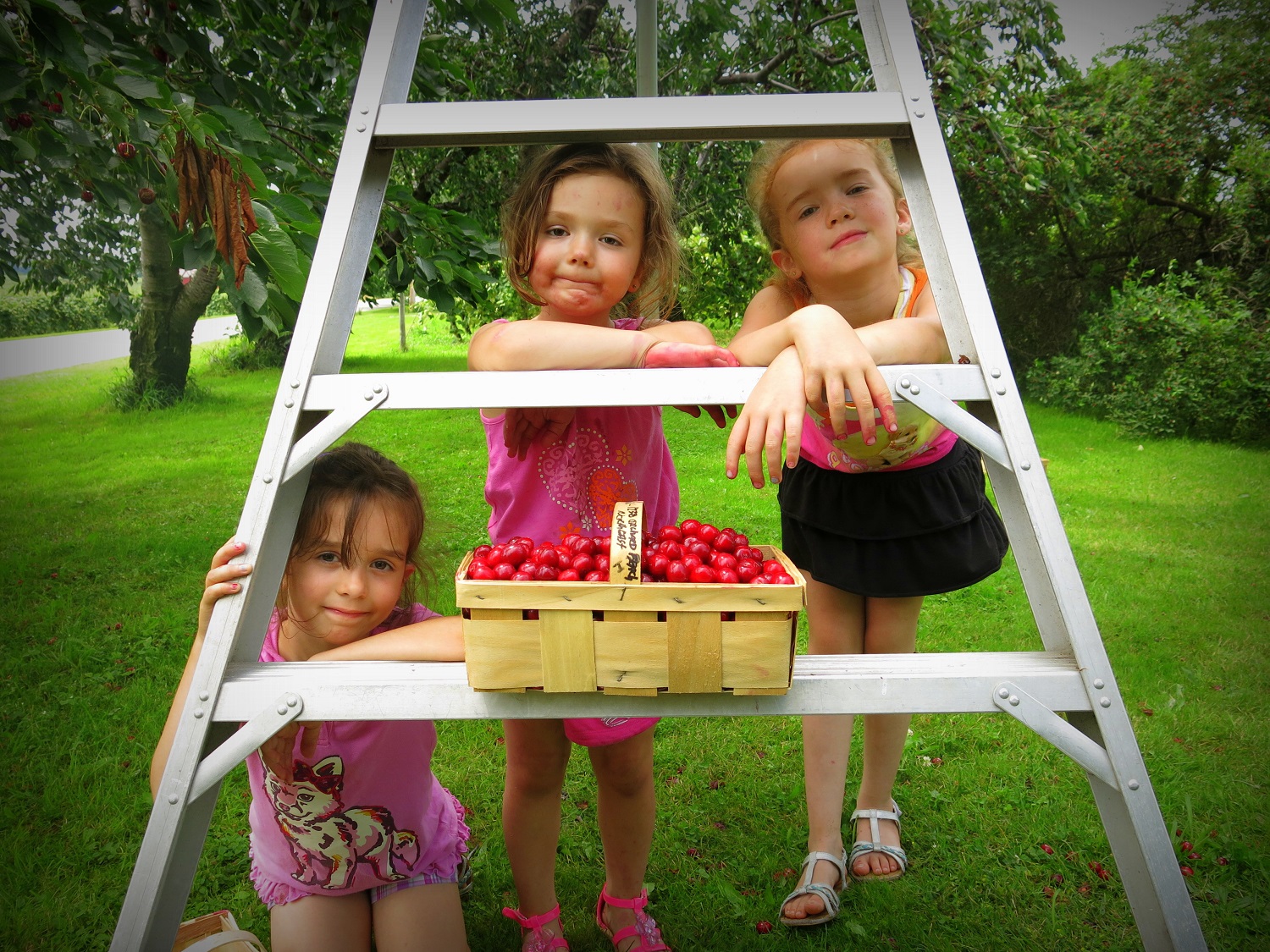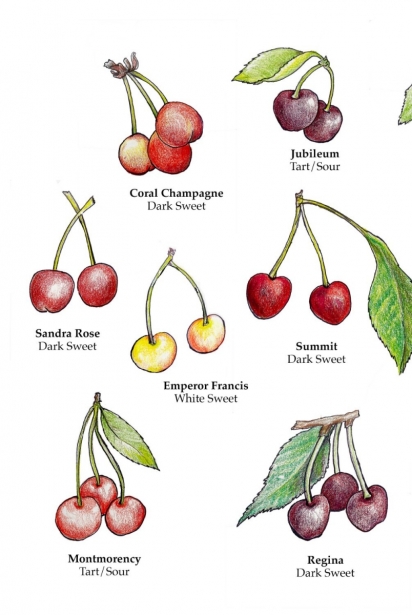Life is Better with Cherries
With a Cherry on Top
The phrase about cherries on top is meant to convey that a good thing just got better. Sort of like icing on a cake, or a feather in one’s cap. A cherry’s appearance just makes summer feel even sunnier. But the miracle that gets a cherry from blossom to bowl requires quite a few things to fall perfectly into place.
Timing is Everything
Cherry trees (members of the genus Prunus) can’t grow in the tropics. To produce fruit, they need a certain number of chill hours during winter. “Chilling” occurs efficiently between 32 and 45 degrees Fahrenheit, but a temperate latitude is not all they need. They are among the first fruit trees to blossom in spring, blooming for about two weeks. This makes the timing a bit persnickety. A hard frost while or after they blossom brings about the risk of losing the entire crop. According to Alan Buhr of Newroyal Orchards in Gasport, NY, the well-drained soils and proximity to the Great Lakes makes Western New York well suited to meet the cherry tree’s special requirements. The lakes help moderate temperature extremes and also delay spring so the trees have better odds against an untimely and damaging frost.
The Best and the Brightest
If all goes well, you can expect harvest to begin in late June. That’s the time to check in with your local U-pick farms to find out when they will open. Many farms that are set up for do-it-yourself picking grow several varieties of cherries to extend the harvest season. As an example, Olde Chautauqua Farms in Portland, NY, grows three types of sours or tarts, including Montmorency, which is one of the most popular sours in the country. They also grow three varieties of white sweets and 13 dark sweets. Harvest for each variety may only last a couple of weeks, so if you are looking for the “best” cherry it may just be the one that’s ripe at that time.
The tastiest cherries are picked at the peak of ripeness and consumed quickly after harvest. They should be bright in color and firm, without wrinkles. If you are unfamiliar with the variety, be sure to ask the farmer to show you what to look for in terms of color and also taste a few as you get started. When you spot a cherry that looks good, grasp it gently and tug. It should come off easily with the stem still attached. If it resists, it isn’t quite ready. If squishy, it is too late. Don’t be afraid to use two hands! Use a belt to attach your bucket to your waist and let those cherries fly.
Refrigerate your bounty as soon as possible and use within two to four days. Wait to wash until just before consuming to help preserve freshness. Bailey Jordan of Olde Chautauqua Farms says if you are not ready to eat the cherries soon, it is best to pick them with the stems on because they will last a little longer.
Good for Your Health
Cherries are not just a source of summer joy. Tom Szulist, co-owner of Singer Farm Naturals in Appleton, NY, recounts that Western New York used to be known for producing cherry pie filling. “But the most remarkable thing about cherries is their health benefits,” he adds, “so why not take advantage of it?” His company started as a garlic farm but now also produces cherry products. Most notable is their Tart Cherry Juice, made with local cherries, which is distributed to many area stores. The juice and some of their other products are processed regionally at Growers Co-op in Westfield.
Cherries pack a bunch of health benefits into a tiny package, according to Healthline.com and the Cleveland Clinic. They are packed with nutrients, fiber and minerals, particularly vitamin C and potassium, as well as antioxidants and anti-inflammatory agents. For this reason, some researchers say that cherries can help support heart and muscle health, boost the immune system and help to reduce symptoms of arthritis and gout. They are a natural food source with a high amount of melatonin, which can promote quality sleep. Studies are also showing that cherries in concentrated form, such as juice, are a healthy way to boost endurance and help athletes recover from exercise-induced muscle damage and strength loss.
Great All Year Long
While there are hundreds of varieties of cherries, most of the fruit consumed in the U.S. falls into the category of sweet (Prunus avium) or sour/tart (Prunus cerasus). People tend to think sweets are for eating fresh and tarts are for cooking, but as Szulist points out, “tart cherries are still sweet.” His favorite tart cherries to eat fresh include the varieties Jubileum and Danube. The point is, you can enjoy most cherry varieties fresh as well as using different types for cooking.
Pitting Cherries
If you don’t have a fancy cherry pitting tool, no worries. You can use a sturdy straw, such as a reusable one, or a chopstick as a “poker.” Hold the cherry gently in one hand, positioned over a bowl, and with the other, push the poker into the cherry where the stem was attached. Keep pushing and the pit will pop out of the other end. Have another bowl handy to collect your pitted cherries. Chilling the collection bowl will help keep the cherries fresh.







